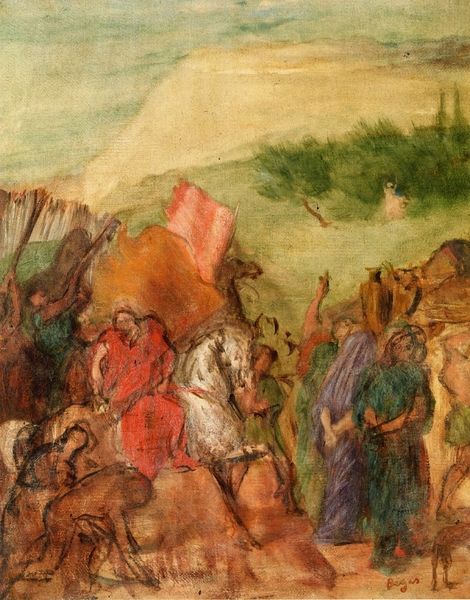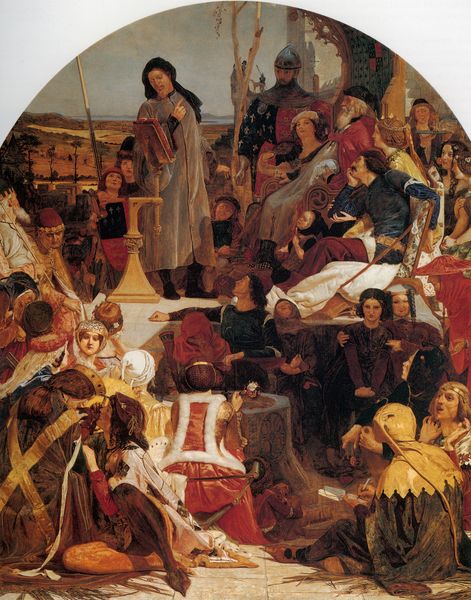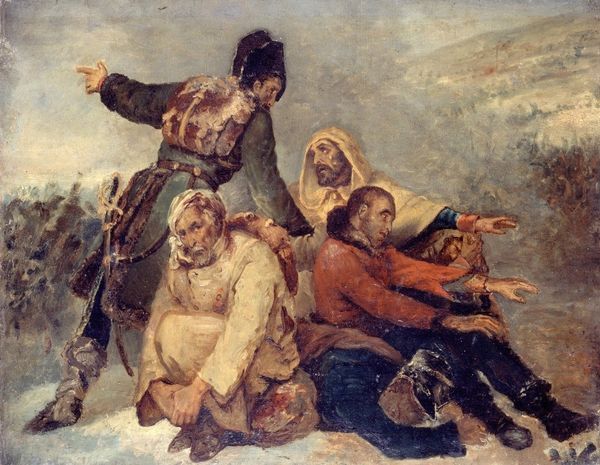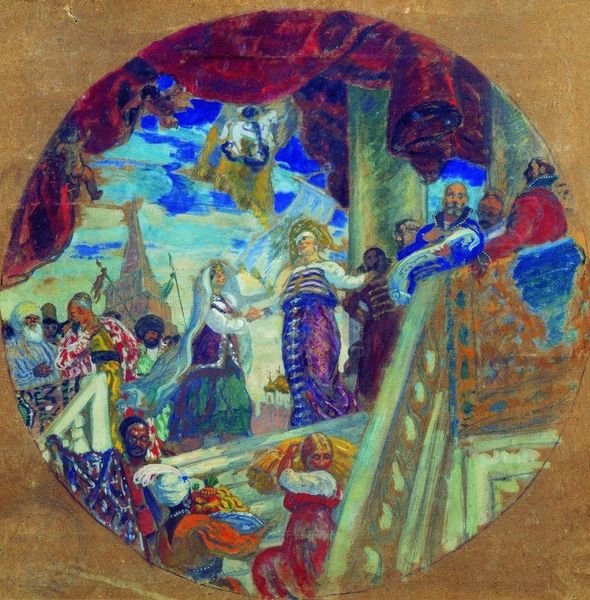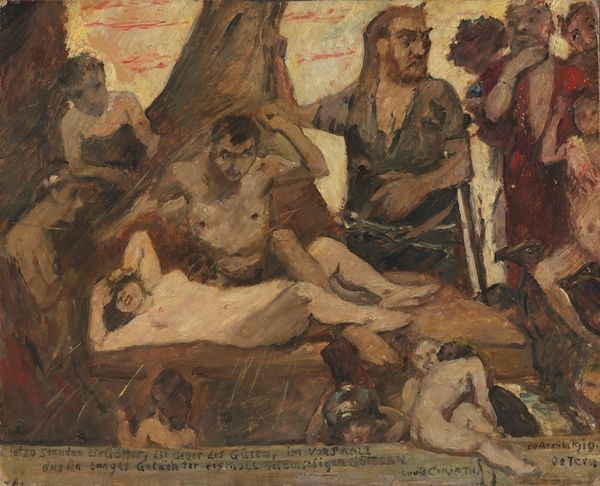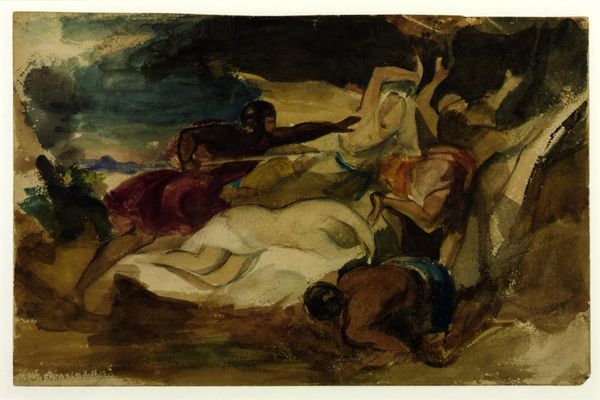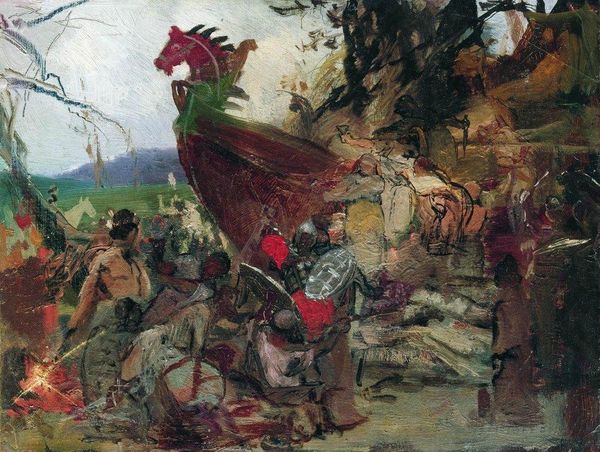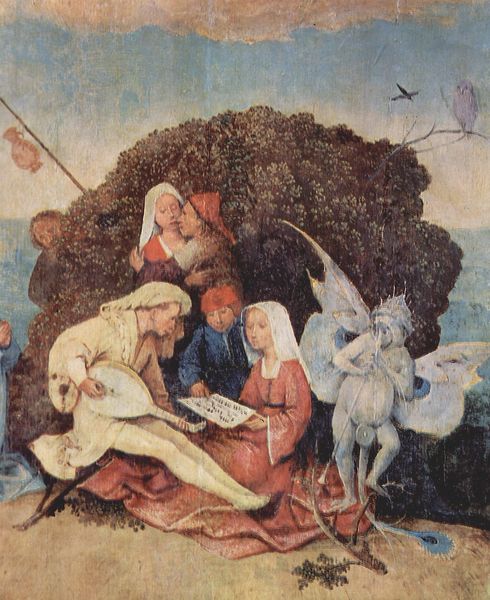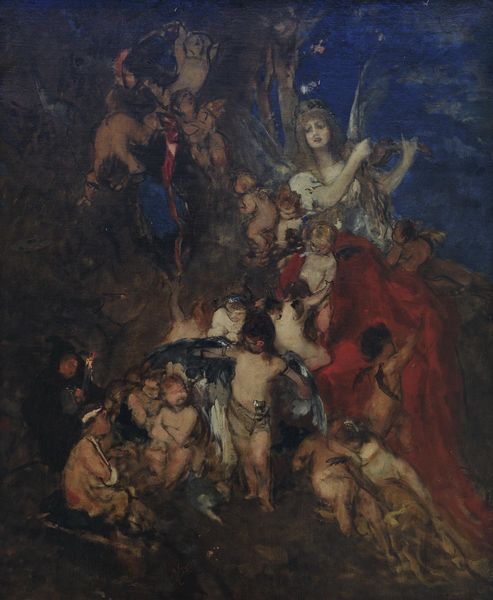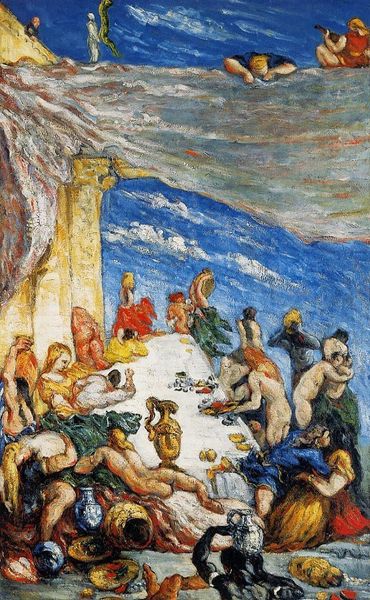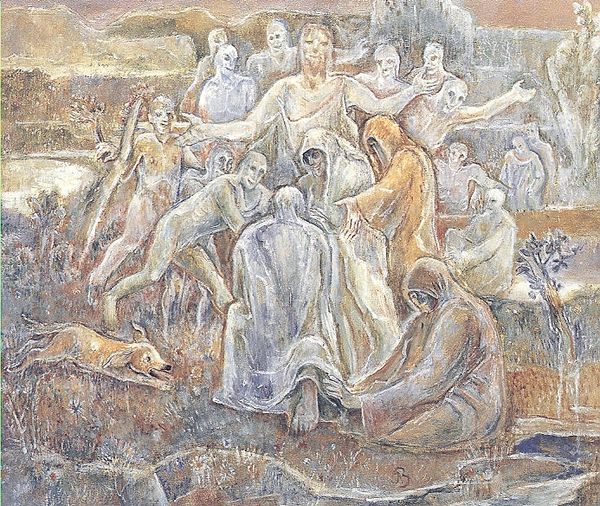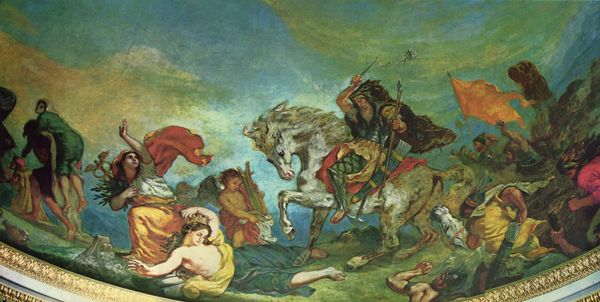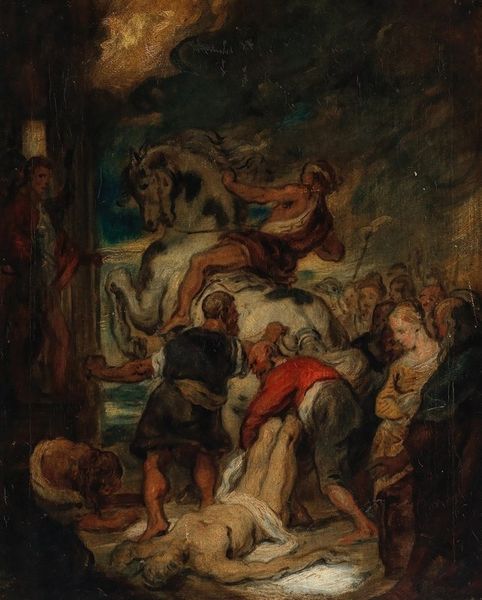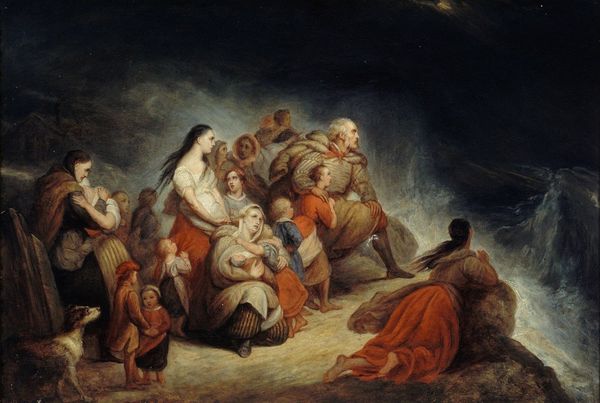
painting, oil-paint
#
portrait
#
narrative-art
#
painting
#
oil-paint
#
war
#
landscape
#
figuration
#
oil painting
#
studio composition
#
group-portraits
#
romanticism
#
genre-painting
#
history-painting
Dimensions: 33 x 30 cm
Copyright: Public domain
Curator: Delacroix's "Massacre of Chios (Study)," created around 1820 with oil paint, is arresting, isn’t it? An early exploration of a brutal historical event, now residing at the Louvre. What impressions does it spark in you? Editor: It feels less like witnessing history and more like wading into a nightmare. A jumble of bodies, muted tones—save for that piercing red cloak—a kind of orchestrated chaos. Look at that gun in the corner, almost an afterthought in this human tragedy. Curator: Indeed, and the use of color…notice how the ochre and browns of the earth seem to seep into the figures themselves, as if they’re dissolving into the landscape of their suffering. The materiality becomes the message; bodies returning to the soil after the violence has been spent. Editor: It’s precisely that blending that unnerves me. Delacroix is almost implicating the landscape, making it an accomplice to the massacre. And that romantic obsession with decay; he's drawn to ruin like a moth to a flame, don’t you think? Curator: I wouldn’t necessarily call it an obsession so much as an unflinching gaze. These weren't imagined tragedies. These were contemporary events, impacting real people. He was deeply moved by their struggle for independence and outraged at the indifference to the plight. But back to material considerations: the loose brushwork is quite stunning. He applied the paint with an incredible expressiveness, almost gestural strokes which were not academic at all. Editor: But whose labour were these paints? And how did such intense pigmentation reach his brushes in a time where trade in materials was itself deeply connected to exploitation and injustice? Delacroix may have critiqued one tragedy, but he relied on the resources that enacted other tragedies, and that’s part of the equation too. Curator: An astute and pertinent point, as always. It highlights the uncomfortable tension between the art and the conditions that enable its production. This ‘Study’ feels as relevant now as it was then, in many respects. Editor: Absolutely. A chilling reminder that materials, like narratives, have histories layered within them.
Comments
No comments
Be the first to comment and join the conversation on the ultimate creative platform.
